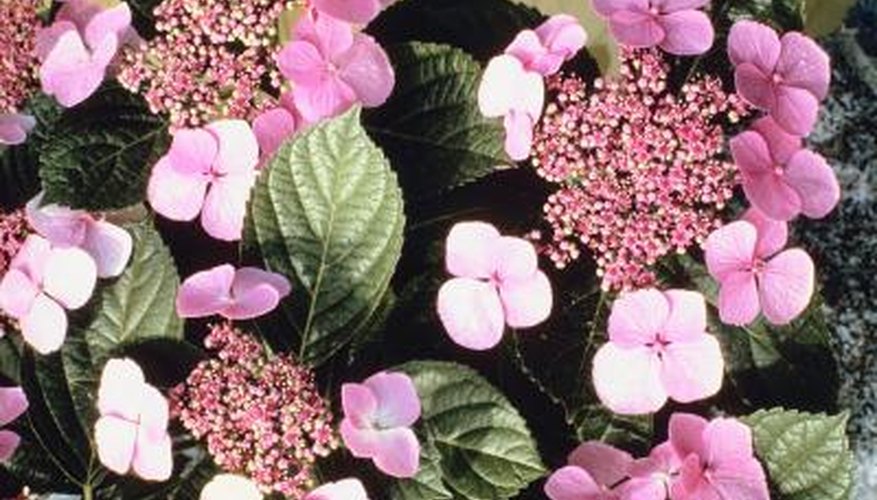Hydrangeas are a popular food source for many different insects. A wide variety of pests could be eating your hydrangeas. These include aphids, scale insects, spider mites, whiteflies and assorted varieties of caterpillars. Identifying the type of infestation on hydrangea plants requires you to be well-informed and observant.
Symptoms of Hydrangea Pest Depredation
Common symptoms caused by all varieties of harmful insects are the yellowing, curling and wilting of hydrangea leaves. Also, aphids and scale insects will secrete a sticky substance called honeydew, which can increase the risk of fungal infection. Spider mites and caterpillars will leave silk on leaves and leaf nodes. All these insects, as well as whiteflies and caterpillars, will chew holes in hydrangea leaves and are capable of consuming the leaf entirely.
- Common symptoms caused by all varieties of harmful insects are the yellowing, curling and wilting of hydrangea leaves.
- All these insects, as well as whiteflies and caterpillars, will chew holes in hydrangea leaves and are capable of consuming the leaf entirely.
Treatment of Hydrangea Pests
A broad-spectrum insecticide will, for the most part, be effective in treating your hydrangea pests. Pick off caterpillars when you see them on leaves in the garden. For scale insects, wiping the stems and leaves off with an alcohol-soaked cloth will provide some measure of population reduction. Pluck off leaves that are too damaged or have a great number of eggs and/or insects on them. If a hydrangea plant is not well-established and is very heavily infested, you may be better off removing the plant entirely to protect the rest of your garden.
- A broad-spectrum insecticide will, for the most part, be effective in treating your hydrangea pests.
- For scale insects, wiping the stems and leaves off with an alcohol-soaked cloth will provide some measure of population reduction.
Natural Control of Hydrangea Pests
For most pests that attack the hydrangea plant, insecticide will be an adequate control measure. However, not all pests respond to treatments, the whitefly being a good example. In addition, some gardeners object to using synthetic chemicals in their gardens and prefer a natural approach. The solution in these cases is to use natural enemies to curb the population of these pests. Examples of these natural enemies are predatory insects like lacewings, lady beetles, pirate beetles and predatory mites.
- For most pests that attack the hydrangea plant, insecticide will be an adequate control measure.
- The solution in these cases is to use natural enemies to curb the population of these pests.
Prevention of Hydrangea Pests
Preventive spraying of pesticides on hydrangea plants every season will somewhat protect your hydrangea plants from insect depredations. A more eco-friendly approach is to create a favourable environment for predatory insects in your garden. Gardeners can encourage predatory insects by avoiding the use of pesticides entirely. Some varieties of predatory insects can be purchased from a commercial supplier and artificially introduced to your hydrangea plants. Finally, research which pests are the most prevalent in your area, so that you can shop for hydrangea cultivars known to be resistant to them.
- Preventive spraying of pesticides on hydrangea plants every season will somewhat protect your hydrangea plants from insect depredations.
- A more eco-friendly approach is to create a favourable environment for predatory insects in your garden.
